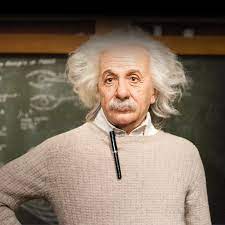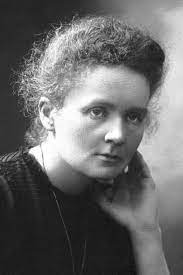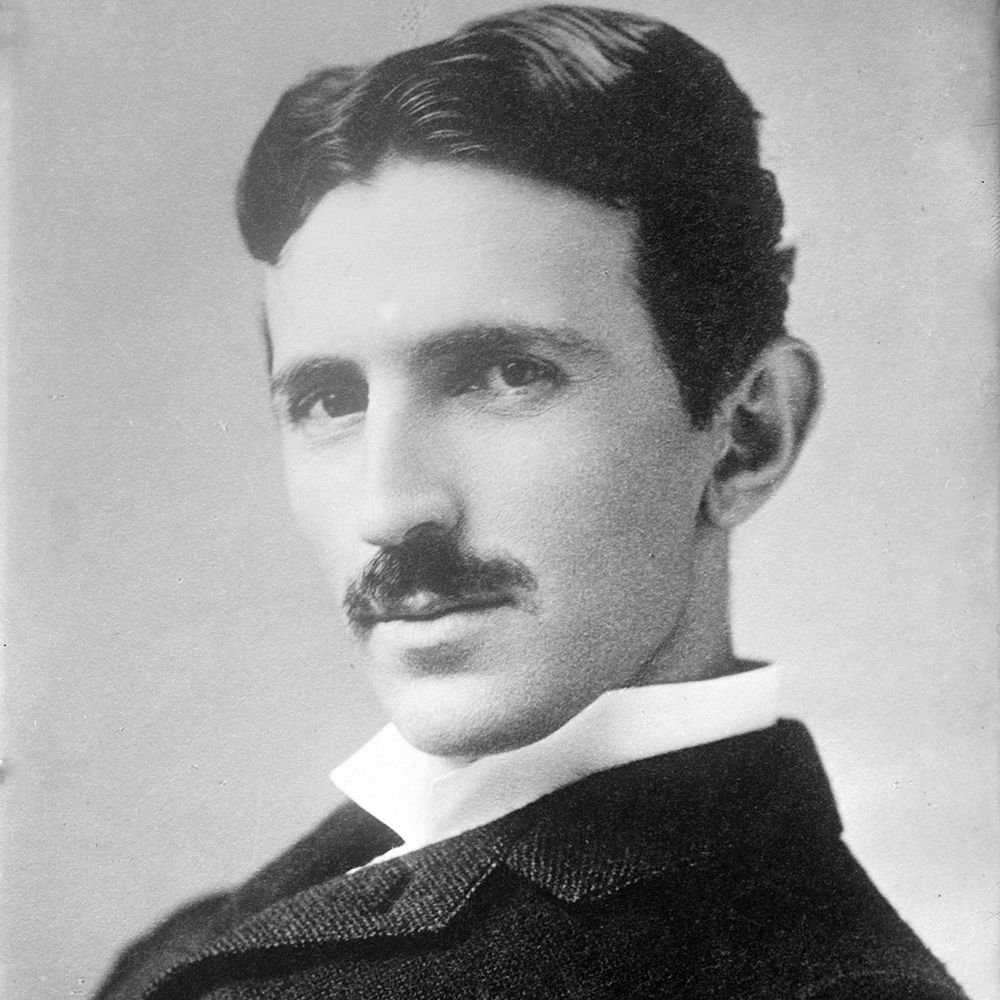Top 3 famous Scientist in this world

Nikola Tesla:
Nikola Tesla (1856-1943) was a Serbian-American inventor, electrical engineer, mechanical engineer, and futurist who made significant contributions to the development of modern electrical systems and technologies. He is widely regarded as one of the most brilliant inventors and visionaries in history. Here are some key points about Nikola Tesla:
-
Early Life and Education: Tesla was born on July 10, 1856, in Smiljan, which is now modern-day Croatia. He studied engineering and physics at the Technical University of Graz and later attended the University of Prague. Tesla had a remarkable ability to visualize and design complex inventions mentally before actually building them, a trait that became a hallmark of his work.
-
AC Electricity and the War of Currents: One of Tesla's most significant contributions was the development of alternating current (AC) electricity. He believed AC was a superior form of electrical distribution compared to Thomas Edison's direct current (DC). Tesla's AC system allowed electricity to be transmitted over long distances, making it practical for widespread use. This led to the "War of Currents" in the late 1880s and early 1890s, a bitter competition between Tesla's AC system and Edison's DC system. Ultimately, AC prevailed and became the dominant method of electrical distribution worldwide.
-
Induction Motor: Tesla is best known for his invention of the AC induction motor, a type of electric motor widely used in industrial applications and household appliances. This invention revolutionized power generation and industrial machinery, making it more efficient and practical.
-
Wireless Power Transmission: Tesla envisioned a wireless power transmission system that would allow electricity to be transmitted through the air, providing energy to remote locations without the need for wires. While he made some progress in this area, his dream of a global wireless power network remained unrealized during his lifetime.
-
Tesla Coil: Tesla also developed the Tesla coil, a resonant transformer circuit that can generate high-voltage, high-frequency electricity. The Tesla coil is still popular today and is often used in educational demonstrations and as a source of entertainment due to its ability to create spectacular electrical displays.
-
Contributions to Radio and X-rays: Tesla made important contributions to the development of radio technology and X-ray devices. However, credit for the invention of the radio is often attributed to Guglielmo Marconi, while Wilhelm Roentgen is generally credited with the discovery of X-rays.
Despite his many groundbreaking inventions, Tesla struggled financially throughout his life and often faced difficulties in securing funding for his projects. In his later years, he became more reclusive and focused on more ambitious and visionary projects, many of which were never fully realized. Nikola Tesla passed away on January 7, 1943, in New York City. Today, he is celebrated as a pioneer in the field of electrical engineering and an inspiration to generations of scientists, inventors, and futurists.
Albert Einstein:
Albert Einstein (1879-1955) was a German-born theoretical physicist who is widely regarded as one of the greatest scientific minds in history. He is best known for formulating the theory of relativity, one of the two pillars of modern physics, and for his famous equation E=mc², which describes the equivalence of mass and energy. Here are some key points about Albert Einstein:

-
Early Life and Education: Einstein was born on March 14, 1879, in Ulm, in the Kingdom of Württemberg in the German Empire (now part of Germany). He showed an early interest in mathematics and physics and excelled in these subjects during his schooling.
-
Theory of Special Relativity: In 1905, Einstein published the theory of special relativity, which revolutionized the understanding of time, space, and motion. It introduced the concept that the laws of physics are the same for all non-accelerating observers and that the speed of light is a constant in a vacuum.
-
Theory of General Relativity: In 1915, Einstein presented his theory of general relativity, which extended the principles of special relativity to include gravity. According to general relativity, massive objects like stars and planets warp the fabric of space-time, influencing the paths of other objects that move through it.
-
Nobel Prize: In 1921, Einstein was awarded the Nobel Prize in Physics for his work on the photoelectric effect, which demonstrated the particle-like behavior of light and laid the foundation for the development of quantum mechanics.
-
Emigration to the United States: In the 1930s, as the Nazis came to power in Germany, Einstein, who was Jewish, emigrated to the United States to escape persecution. He accepted a position at the Institute for Advanced Study in Princeton, New Jersey, where he spent the rest of his career.
-
Later Contributions: Einstein continued to make significant contributions to physics, particularly in the study of quantum mechanics and the development of unified field theories, attempting to reconcile electromagnetism and gravity into a single framework. However, he was unable to achieve the desired unified theory.
-
Legacy: Albert Einstein's work had a profound impact on the field of physics and laid the foundation for many subsequent scientific discoveries. His theories have been extensively tested and confirmed through experiments and observations, making them fundamental principles in modern physics.
-
Humanity and Activism: In addition to his scientific achievements, Einstein was an outspoken advocate for civil rights, pacifism, and social justice. He was deeply concerned about the proliferation of nuclear weapons and worked to promote peace during and after World War II.
Albert Einstein passed away on April 18, 1955, but his legacy lives on through his scientific contributions and the inspiration he continues to provide to scientists, thinkers, and people around the world. He remains a symbol of genius, creativity, and intellectual curiosity.
Marie Curie:
Marie Curie (1867-1934) was a pioneering scientist who made significant contributions to the fields of physics and chemistry. She is best known for her groundbreaking research on radioactivity, as well as her discoveries of the elements polonium and radium. Here are some key points about Marie Curie:

-
Early Life and Education: Marie Curie was born as Maria Skłodowska on November 7, 1867, in Warsaw, Poland, which was then part of the Russian Empire. She came from a family of educators and was encouraged to pursue education, despite the limitations imposed on women's education at the time. She attended the Floating University, an underground educational institution, and later moved to Paris, France, to study at the Sorbonne University.
-
Discovery of Radioactivity: In collaboration with her husband, Pierre Curie, Marie conducted extensive research on radioactive materials. In 1898, they discovered two new elements, polonium (named after Marie's native Poland) and radium. These discoveries revolutionized the understanding of atomic physics and earned Marie Curie international recognition.
-
Nobel Prizes: Marie Curie became the first woman to win a Nobel Prize when she and Pierre Curie, along with physicist Henri Becquerel, were jointly awarded the Nobel Prize in Physics in 1903 for their research on radioactivity. In 1911, she received her second Nobel Prize, this time in Chemistry, in recognition of her discovery of radium and polonium and her further investigations into the properties of radioactive elements.
-
Contributions to Medicine: Marie Curie's work on radioactivity had significant applications in medicine. She and her daughter, Irène Joliot-Curie, developed mobile radiography units, known as "Little Curies," which were used during World War I to provide X-ray imaging for wounded soldiers.
-
Legacy: Marie Curie's achievements broke gender barriers and inspired countless women to pursue careers in science. Her dedication to research and her perseverance in the face of societal obstacles have made her an enduring symbol of female empowerment and scientific achievement.
-
Later Life and Death: After Pierre Curie's tragic death in a road accident in 1906, Marie Curie continued her research and academic work. She became the first woman to be appointed as a professor at the Sorbonne. However, her prolonged exposure to radioactive materials during her research eventually took a toll on her health. Marie Curie died on July 4, 1934, from aplastic anemia, a condition likely caused by radiation exposure.
Marie Curie's contributions to science have had a lasting impact on our understanding of the fundamental properties of matter and radiation. Her legacy continues to inspire and encourage future generations of scientists, especially women, to pursue careers in STEM (science, technology, engineering, and mathematics) fields.









